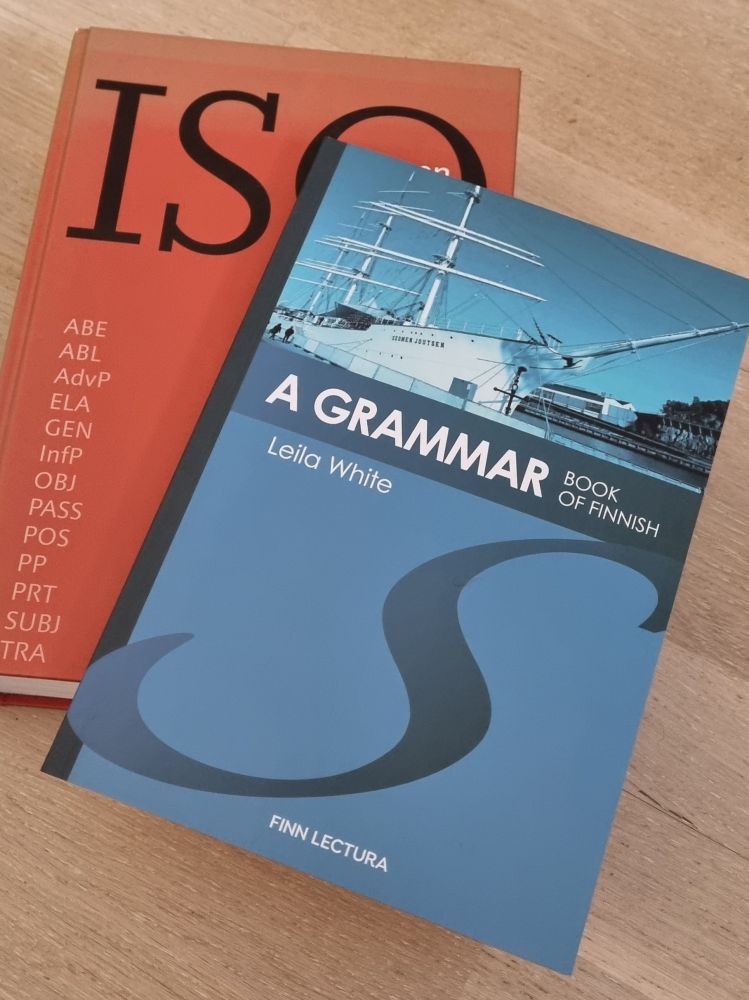Kurkilaaksossa tapahtuu
-
What we talk about when we talk about partitive
Every Finnish teacher encounters frustrated students who have got nothing out of a language course because the teacher only talked about something called partitive. We teachers are also told to teach the usage of the language first and after that the grammar. This is confusing. Many teachers feel that teaching grammar is almost forbidden, but students feel that there is too much emphasis on grammar.
Believe me, grammar is the usage of language. If, for example, you're learning to talk about family, the teacher gives you an example:
Minulla on kuusi lasta, kolme tyttöä ja kolme poikaa.
I can teach it as a phrase without analysing the grammatical structure of the sentence, in the same way that I teach the greeting Huomenta without explaining that it is a partitive form. Then, when a student wants to tell me that she has one son, a husband and two dogs, it is my unpleasant duty to tell her that, in the sentence
Minulla on yksi poika, aviomies ja kaksi koiraa.
the word koiraa is not a plural, as one might think after the number, but a singular partitive, like the words lasta, tyttöä and poikaa. If I don't tell it, the students will sooner or later ask why there's not koirat.
If you want to learn Finnish, you must accept the partitive into your life. Sorry about that. The partitive is a very frequent form that has many different functions and, by the way, it doesn't always express part of something. Rakastan sinua does not mean that I only partly love you. My interpretation is that the partitive sinua refers to the long duration of the action expressed by the verb.
And now, I did hear the large audience shouting that what does it matter what the right forms are. The important thing is to understand! Yes, you will be understood if you say.
Minä on kuusi lapsi.
Unfortunately, no Finn says that. You should also understand the sentence Minulla on kuusi lasta (Or Mullon kuus lasta, but that's another story.) And surely no one thinks that a teacher should teach the wrong structures just because it's easier for the student? The Finnish language doesn't work by putting words in a row to make sentences. You can speak and be understood that way. You can undoubtedly say Poika ostaa kallis vaate, but it is easier to understand the speech of others if you are familiar with the imperfect and the partitive and recognise the words in the sentence Poika osti kalliita vaatteita. Most students also prefer to speak correctly rather than incorrectly. In fact, it is my experience that many students want to focus on grammar more than teachers do, but such people are perhaps more silent in the general discussion.
I admit that there is also an unnecessary grammar orientation in the teaching. It means that the starting point is not the communication situation, but the form. I have seen too many black gap exercises about partitive and too many exercises where you conjugate vocabulary that has not been studied yet. I have also seen an unnecessary focus on whether to say Söin salaattia or Söin salaatin. Both are correct and reasonable sentences, and the listener doesn't necessarily make any sense knowing whether you ate the whole salad or not.
Grammar orientation is also about not teaching a grammatical structure that is perceived as difficult to form, even though there is a great need for what it expresses. This is the case, for example, with the Finnish imperfect. My colleague Tiina Tervaniemi, who always has good insights, described it well: the imperfect opens up a whole new world when you get away from what is happening in the here and now. Especially for adults, it is important to be able to tell what they were and did before.
We know that language is learned more naturally as phrases and sentence fragments than as a theoretical system. Even the partitive is partly logic and partly model learning and memorisation. There are good language learning methods that are based on students repeating sentences according to a model. Such a method takes time. If you have 90 minutes a week, the teacher will often concentrate on theory when the language is like Finnish, where there are many forms to learn in the early stages. Of course, students cannot realise that things will get easier once the basic structures have been learned. For the teacher, the choice is difficult. Not teaching grammar is a bit like giving a partially assembled piece of furniture from Ikea, but not the tools to build it yourself.
Tagit: partitive grammar teaching language learning methods Takaisin




